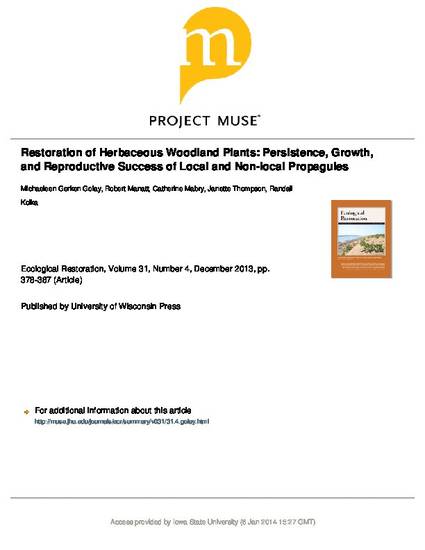
Restoring the forest herbaceous layer in remnant forests throughout the Midwestern United States (U.S.) is limited by the lack of seed and propagules for many plant species. As a result, restorationists often have limited material to work with and must seek out plant material at a regional rather than a local scale, without knowing whether regional provenances are ecologically appropriate. We conducted greenhouse and field experiments to examine persistence, growth, and reproduction of three herbaceous perennials (wild ginger, Virginia waterleaf, and James’ sedge) that could be used for restoration. The greenhouse experiment represented a common garden and was conducted to identify whether there were genetic differences in morphological characters between local plants and non-local transplants from commercial nurseries. The two-year field study was conducted to determine whether any genetic differences noted in the greenhouse persisted in a natural setting, and also to determine what planting density (two or five individuals in a 0.25 m2 plot) would be sufficient for the plants to establish. In the greenhouse, growth and reproductive measures for non-local plants were generally equal to or greater than those of local plants. However, we found the reverse for many traits, particularly related to reproduction, in the field during year two. In natural field conditions local plants had equal or greater vegetative growth and reproduction than non-local plants, although both had similar persistence. Further, similar persistence and growth in low- and high-density field plots suggested that a limited number of transplants would be adequate for successful establishment of non-local transplant stock.
Available at: http://works.bepress.com/janette_thompson/10/

This article is from Ecological Restoration 31 (2013): 378–387.